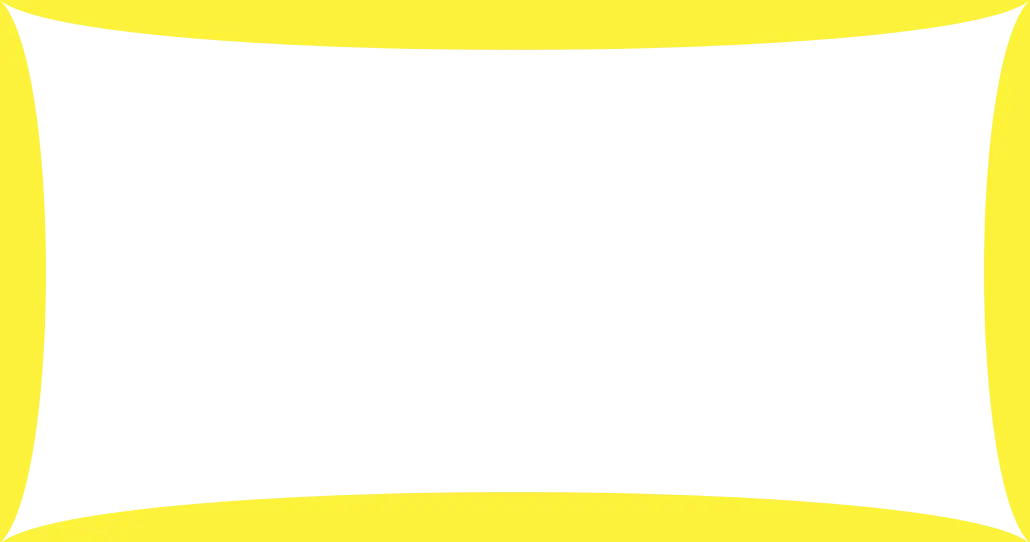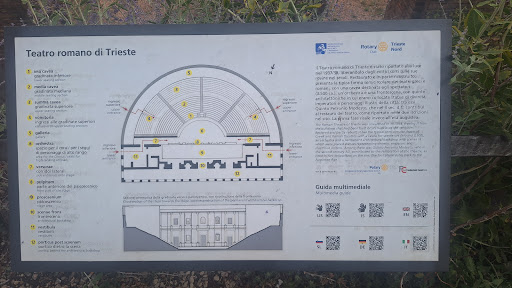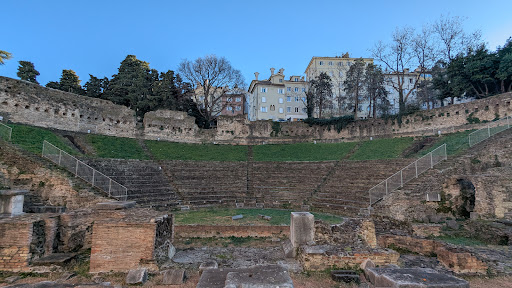Roman Theatre of Trieste things to do, attractions, restaurants, events info and trip planning

Basic Info
Roman Theatre of Trieste
Via del Teatro Romano, 34121 Trieste TS, Italy
4.3(2.4K)
Open 24 hours
Save
spot
spot
Ratings & Description
Info
Cultural
Outdoor
Family friendly
attractions: Piazza della Borsa, Unity of Italy Square, Castello di San Giusto, Umberto Saba Statue, Canal Grande, Serbian Orthodox Church of Saint Spyridon, Parrocchia di Santa Maria Maggiore, Parco della Rimembranza, Trieste War Memorial, Teatro Lirico Giuseppe Verdi, restaurants: Taverna Ai Mastri D'Arme, Trattoria Caprese Trieste, Osteria da Marino, Buffet da Pepi, Eppinger Caffè, Ristorante Trieste Mood, Geco birreria e trattoria Trieste, Hostaria Malcanton, Chimera di Bacco, Taverna del Ghetto
 Learn more insights from Wanderboat AI.
Learn more insights from Wanderboat AI.Phone
+39 040 347 8312
Website
turismofvg.it
Plan your stay

Pet-friendly Hotels in Trieste
Find a cozy hotel nearby and make it a full experience.

Affordable Hotels in Trieste
Find a cozy hotel nearby and make it a full experience.
The Coolest Hotels You Haven't Heard Of (Yet)
Find a cozy hotel nearby and make it a full experience.

Trending Stays Worth the Hype in Trieste
Find a cozy hotel nearby and make it a full experience.
Reviews
Nearby attractions of Roman Theatre of Trieste
Piazza della Borsa
Unity of Italy Square
Castello di San Giusto
Umberto Saba Statue
Canal Grande
Serbian Orthodox Church of Saint Spyridon
Parrocchia di Santa Maria Maggiore
Parco della Rimembranza
Trieste War Memorial
Teatro Lirico Giuseppe Verdi
Piazza della Borsa
4.6
(2.3K)
Open 24 hours
Click for details
Unity of Italy Square
4.8
(19K)
Open 24 hours
Click for details

Castello di San Giusto
4.5
(2.5K)
Closed
Click for details

Umberto Saba Statue
4.5
(208)
Open 24 hours
Click for details
Things to do nearby
Olive Oil Tasting Experience
Journey of Flavors
Wed, Dec 24 • 2:00 PM
6273, Marezige, Slovenia
View details
No Diet Club - Unique local food in Trieste
Fri, Dec 26 • 11:30 AM
34123, Trieste, Friuli-Venezia Giulia, Italy
View details

Taste Istrian wines on Bordon estate
Wed, Dec 24 • 2:00 PM
6271, Dekani, Slovenia
View details
Nearby restaurants of Roman Theatre of Trieste
Taverna Ai Mastri D'Arme
Trattoria Caprese Trieste
Osteria da Marino
Buffet da Pepi
Eppinger Caffè
Ristorante Trieste Mood
Geco birreria e trattoria Trieste
Hostaria Malcanton
Chimera di Bacco
Taverna del Ghetto

Taverna Ai Mastri D'Arme
4.6
(701)
Click for details
Trattoria Caprese Trieste
4.0
(2K)
Click for details

Osteria da Marino
4.5
(583)
Click for details
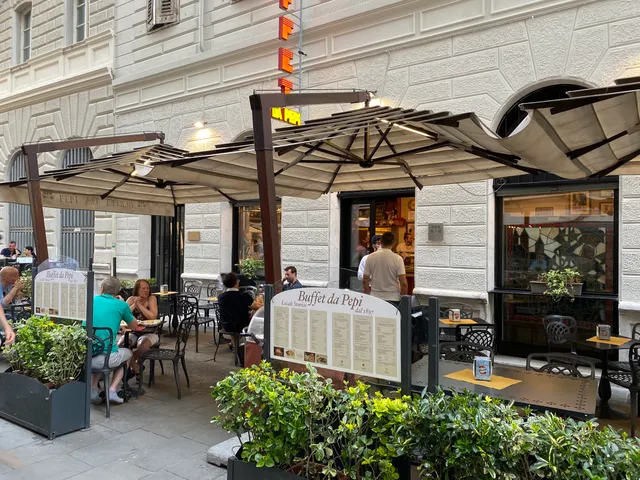
Buffet da Pepi
4.3
(2.1K)
Click for details

